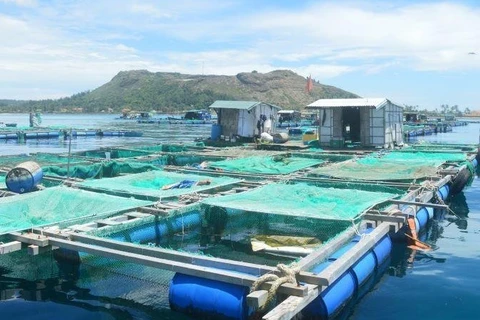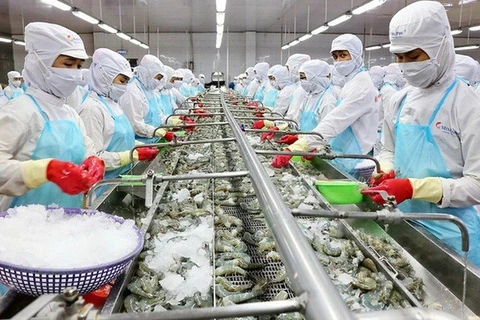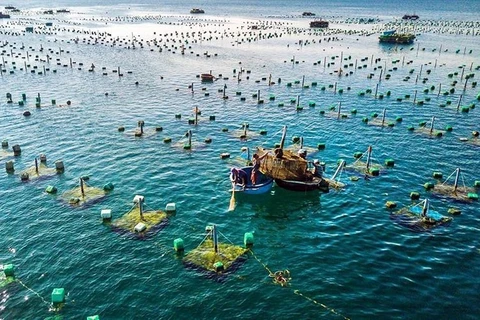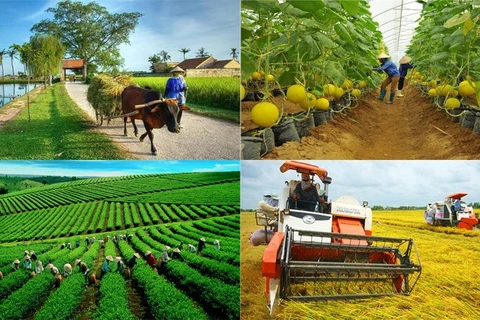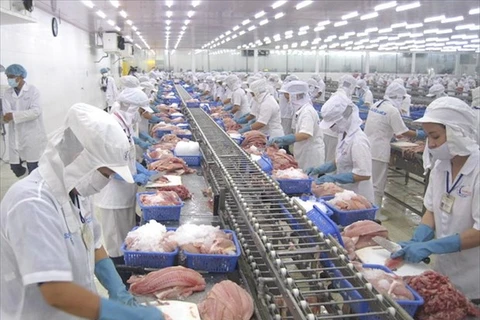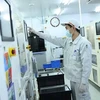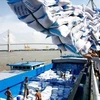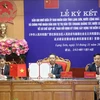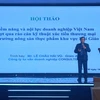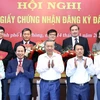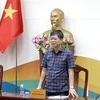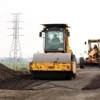 Vietnam has the advantage of a long coastline and sufficient water surface area for developing both brackish and freshwater aquaculture. (Photo: vneconomy.vn)
Vietnam has the advantage of a long coastline and sufficient water surface area for developing both brackish and freshwater aquaculture. (Photo: vneconomy.vn) HCM City (VNA) – The growth in Vietnam's seafood export turnover in recent years has been created from the foundation of the aquatic farming, exploitation and processing industry.
Vietnam’s aquaculture industry has not only served the sizable domestic market with a population of about 100 million but also gradually conquered the world market, said Truong Dinh Hoe, General Secretary of the Vietnam Association of Seafood Exporters and Producers (VASEP).
Hoe said that along with the growth of global seafood consumption demand, Vietnam's aquaculture product export turnover has maintained growth for many years and reached 11 billion USD in 2022, 12 times higher than that of 1998.
Not only growing in output, Vietnamese aquacultural products are also considered a source of protein with stable quality and increasingly high nutritional value, contributing to ensuring food supply for people arround the world. Currently, Vietnam is the third largest seafood exporter in the world, after China and Norway.
Vietnam’s fisheries industry now has advantages. First, seafood consumption is increasing globally while natural aquatic resources are limited and seafood supply must rely on aquaculture activities. Vietnam has the advantage of a long coastline and sufficient water surface area for developing both brackish and freshwater aquaculture. Of the total world shrimp production of about 6 million tonnes per year, Vietnam contributes about 1 million tonnes.
The second advantage is that Vietnamese businesses can catch up with the world in processing technology, particularly deep processing to make value-added products.
Thirdly, Vietnam has integrated widely and deeply into the global economy through signing and implementing new-generation free trade agreements (FTAs) with countries and regions that are large consumption markets.
However, Vietnam’s fisheries sector faces disadvantages such as small-scale production, mostly household farming, and negative impacts of climate change that result in the shrinking of freshwater aquaculture areas, Hoe said.
He added that Vietnam has strengths in processing technology and consumption markets.
The issue that its aquaculture sector needs to address now is how to optimize production costs through minimizing input costs.
Long-term solutions are also needed such as gradually increasing the rate of large-scale production, applying high technology to improve productivity, and attracting investment in local animal feed and breed production to reduce its reliance on imported sources.
Hoe said that Vietnamese aquacultural products are present in over 170 countries and territories all over the world, so finding new markets is no longer a priority.
In the context of a decline in purchasing power in major markets, businesses and associations need to step up trade promotion to effectively exploit the potential of each market.
Regarding the increasing trend of green production and green consumption, the VASEP representative said that Vietnam's fisheries industry is "going green" quite well.
Up to 70% of raw materials used to make products for export are raised at farms. Vietnam has more and more farms and farming areas that have received international certifications for responsibly farmed aquatic products, minimized negative impacts on the environment, ecosystem, and community, and meeting labour regulations.
Out of 847 industrial-scale factories with food safety certificates, over 690 factories received codes for exporting products to the EU. For the US market, Vietnamese products also meet Best Aquaculture Practices (BAP).
As Vietnam committed to net zero emissions by 2050, it's time for every industry and business to make moves including the use of energy-efficient equipment, renewable energy, and low-carbon packaging./.

